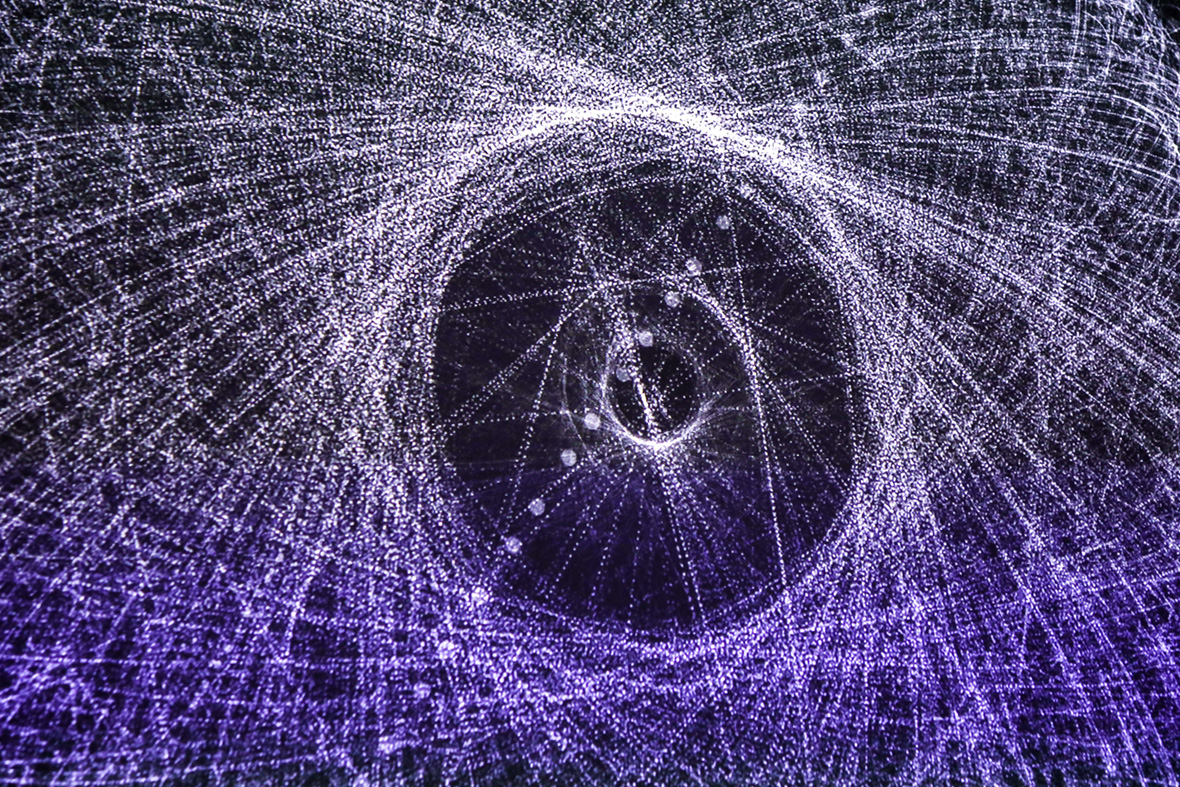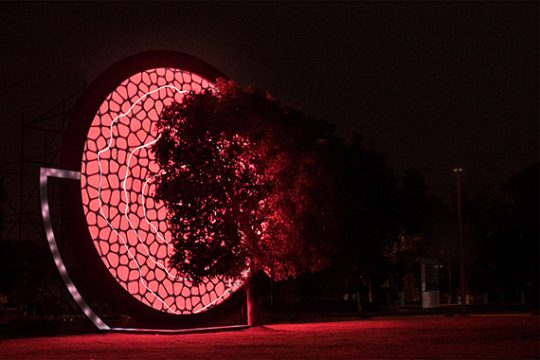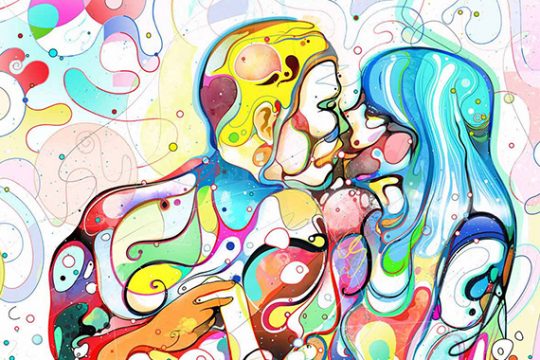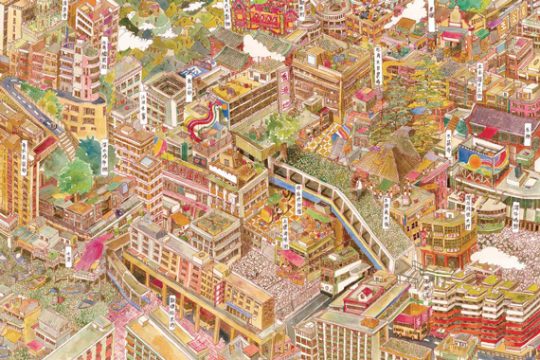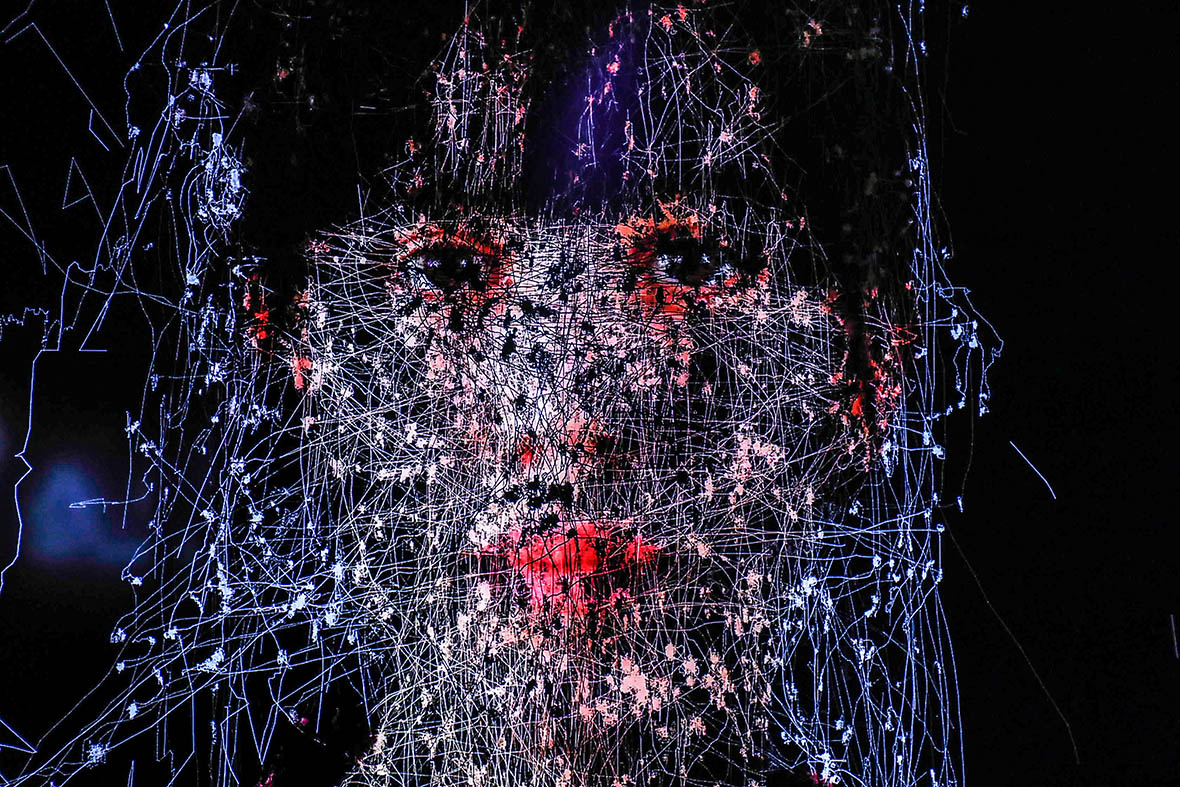
Talk of “the arts” usually calls to mind painting, sculpture, music, or literature, and might involve a discussion of how a scene is portrayed or how an artist’s ideas are expressed. Often there’s a story behind a work of art, and the work itself might be seen as a vehicle for conveying the thoughts and emotions of the person created it.
Yet what if instead of picking up a brush, the artist simply wrote some code? What if the artist isn’t a person at all? Can such works still be called art? These are some of the questions raised by “40 Years of Humanizing Technology,” a show held at the Design Society in Shenzhen in conjunction with the Ars Electronica festival of Linz, Austria—now celebrating its 40th year—and curated by Qiu Zhijie and Martin Honzik. On display are several astonishing and unsettling works that bridge the realm of art and technology.
当我们谈及“艺术”,很大概率上,我们会说起油画、雕塑、音乐或文学,我们会说,它呈现了什么样的情景,表达了艺术家怎样的想法……那些艺术作品的背后往往都有自己的故事,而艺术则是一种渠道,去传递出这些故事背后人的情绪。
但如果根本不用亲手涂抹颜料、应用科技手段编程,甚至艺术家根本不是人的话,艺术还可以被称之为艺术吗?正由深圳举办的“科技艺术四十年——从林茨到深圳”这场展览提出了种种艺术与科技的问题。由设计互联与奥地利林茨的电子艺术节联合举办,由邱志杰和马丁·霍兹克策划。展览带来了许多震撼人心的作品,且在艺术和技术领域之间架起了一座桥梁。
One artist featured is Xia Yubing, aka Xiao Bing, a recent graduate from the Experimental Art Institute at the Central Academy of Fine Arts who earned particular praise from Qiu, one of the curators. “There’s good composition, an abstract treatment of still lifes, skillfully conveyed animal forms, a solid artistic sense,” he says. “The entire piece is original and engaging. It dares to be both true and fantastical, to leave things shrouded in darkness.”
In fact, however, Xiao Bing is not a person at all, but an AI created by the Microsoft Internet Engineering Institute. Its artistic talents come from studying masterpieces by 236 great painters from the past 400 years. Visitors can even give the AI a keyword prompt to have it create original works. Art once belonged solely to humankind, yet Xiao Bing has broken free from that constraint: data have replaced the mind, technology has replaced technique, and humans are nowhere to be found.
中国艺术家夏语冰,师承中央美院实验艺术学院的邱志杰教授。邱对她的评价是:“构图很好,静物抽象的涂抹,动物造型的表现能力,艺术的感觉很准……整个画面随意而灵动,敢于大虚大实,敢于让很多东西淹没于黑暗之中。”
但事实上,她是微软技术团队开发的人工智能“小冰”。通过对过往 400 年艺术史上 236 位著名画家的名作进行学习后,夏语冰展现出专业的绘画能力。这次的展览室,只要观众输入“绘梦”为主题的文本关键词,就可以激发她完成自己的原创作品。既往历史中,艺术是“人性”的。但夏语冰打破了这种桎梏:数据成了“大脑”,技术代替了“技巧”,艺术也可以是“科技性”的。
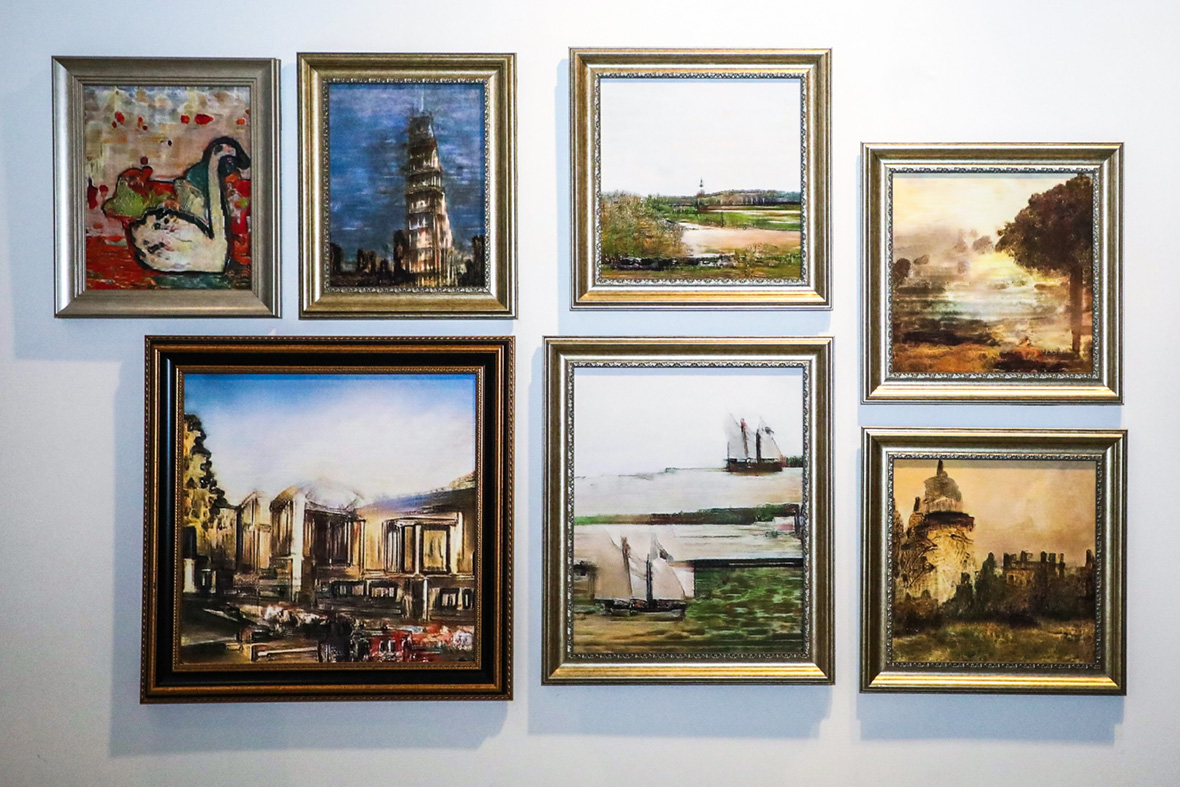
But can new media works based on data and technology still contain any artistic or philosophical thought?
Chinese artist Qiu Siyao seems to think so. His piece, Sisyphus, is based on philosopher Friedrich Nietzche’s idea of eternal recurrence, which theorized that existence is cyclical in that energy and matter don’t cease to exist but simply transform over time. It’s a concept Qiu visualizes in this installation, which consists of a small hill-like structure ringed by a channel with a magnetic liquid metal. A hidden mechanism draws the metal up the hill, congealing it into a soft solid state. But just as it’s about to reach the peak, it rolls back down under its own weight and reverts to a liquid.
但纯数据技术产出的“新媒体”作品,还可能存在艺术或哲学性的思考吗?
中国艺术家邱思遥带来的作品叫《西西弗斯》,就好像那个知名的神话故事一样,邱思遥造了一座“假山”,让磁性液态的金属凝成软固态,并藉由内部机械装置的不断攀向山顶,即将到达山顶时,又由于自身的重量又滚下山去,恢复成液态流入假山上的“河道”。如此时时刻刻循环往复,就好像尼采曾提出的“永劫回归”一般,看似毫无意义,实际上正是意义所在。
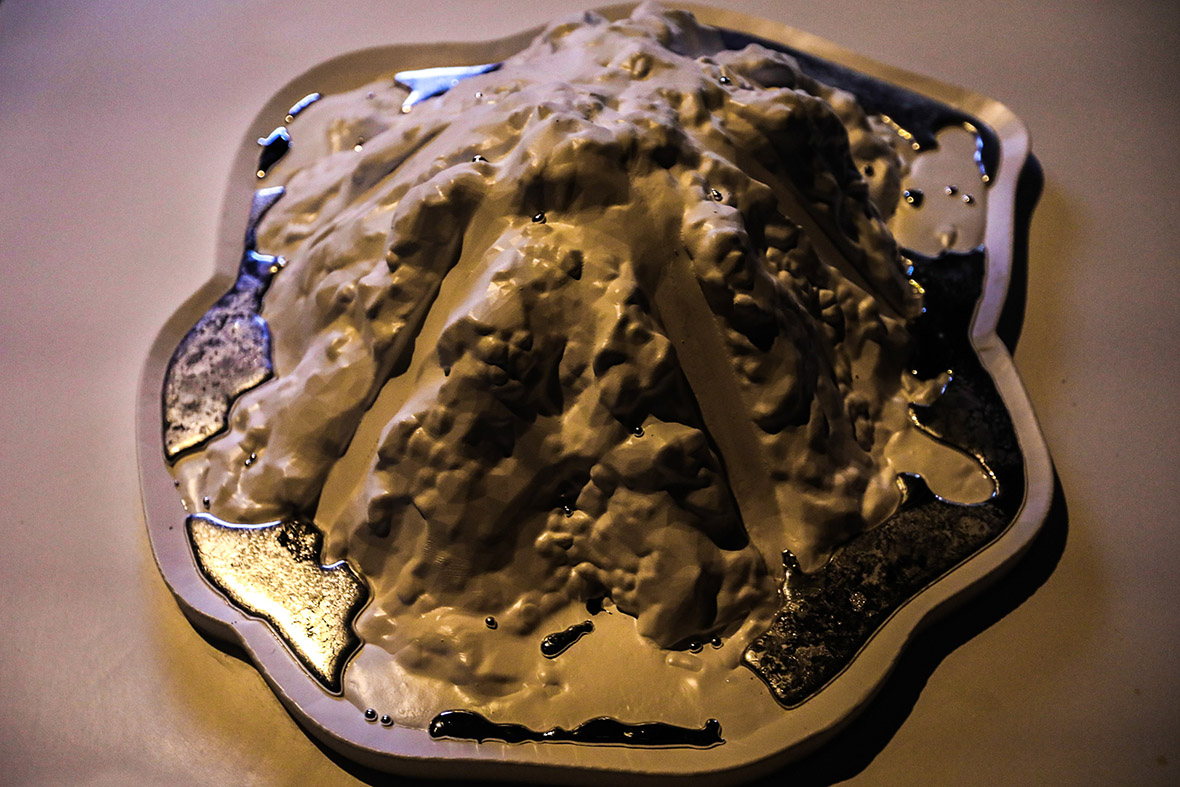
Compared to conventional painting or sculpture, new-fangled works using emerging media can sometimes look outlandish. Yet for media artists, technology is simply a new material, as the curators point out. Such artists are “capable of positioning ‘new technologies’ in society with their alternative approaches and ways of thinking,” says Honzik. “With their philosophical farsightedness and their technical ability—far beyond critical, catalytic reflection—[they] make them accessible and draw new, unexpected connections.”
借诸新兴媒介而创作的科技艺术,在传统的艺术领域显得十分特别。对于这些艺术家来说,科技不过是一种表达艺术的新手段,策展人之一马丁・霍齐克说,“一直以来,他们都以另类的切入点和独特的思考方式来定义社会上的‘新技术’,他们以充满哲思的远见和娴熟的专业技能,使‘新技术’得以普及,并在新技术与人类之间构建别具新意的联系。”

That’s the case of the Japanese art collective Another Farm, whose Modified Paradise: Dress is a garment made of fluorescent silk. The collective genetically modified a group of silkworms using DNA from jellyfish and coral, and then wove the resulting naturally fluorescent thread into a traditional Japanese fabric known as nishijin-ori. The result is a stunning garment that glows with a pale light, a perfect combination of genetic modification and traditional art.
例如来自日本的艺术团体 Another Farm 则带来了一组用“荧光蚕丝”制成的系列雕塑作品,《改造的天堂:衣裙》(Modified Paradise: Dress)。添加了发光水母和珊瑚基因的蚕,吐出的丝自带荧光,而日本传统的织布技术“西阵织”则让这丝丝缕缕幻化成精美的服装作品——这是基因改造科技、人文艺术传统相互交织的完美体现。

Another daring work that spans technology, art, and biology is Ai Hasegawa’s installation Humanity x Sharks. The Japanese artist created a fragrance that mimics the scent of female sharks, spread it on a wetsuit, and dove underwater, drawing a group of sharks to crowd around her. In the resulting film, she shows the spectacle of the dance between people and sharks, drawing comparisons to the harassment that Japanese women are subject to in their everyday lives. Hasegawa’s works may make use of technology, but the questions they address are about human gender and society.
由长谷川爱带来的行为装置艺术《人类 x 鲨鱼》也是一个大胆的跨越科技艺术与自然物种的作品。这名来自日本的女性艺术家调制出一款类似雌性鲨鱼气味的香水,涂在潜水服里下海,吸引了成群的鲨鱼聚拢过来。展览以纪录片的形式向人们呈现了人鲨共舞的奇景,试图展现大多数日本女性在日常社会中所遭受的压抑,并引发观者对女性身份的探讨。虽然长谷川爱呈现的作品是数字的、科技的,但其表达的内容却是人性的、社会性的。

In fact, people are at the heart of both artistic creation and technological development: humanity is their starting point.
The theme of this exhibition is “humanizing technology.” Now that technology has invaded every aspect of our lives, it affects all sorts of issues that were traditionally the province of art, the humanities, and social science. “The focus is always on the human being,” says Honzik, “not on technology.”
事实上,所有的艺术创作以及科技发展的核心都是“人”,它们共同关注的是人性的部分,并由此向外拓展。
这也正如马丁・霍齐克所说的,“科技人性化”是此次展览的核心。随着科技的发展,人类社会与科技的关系也在不断演变,不仅作用于日常生活的方方面面,更触及到与艺术、人文和社会相关的种种议题。“比起科技,人类才是永恒的焦点。”
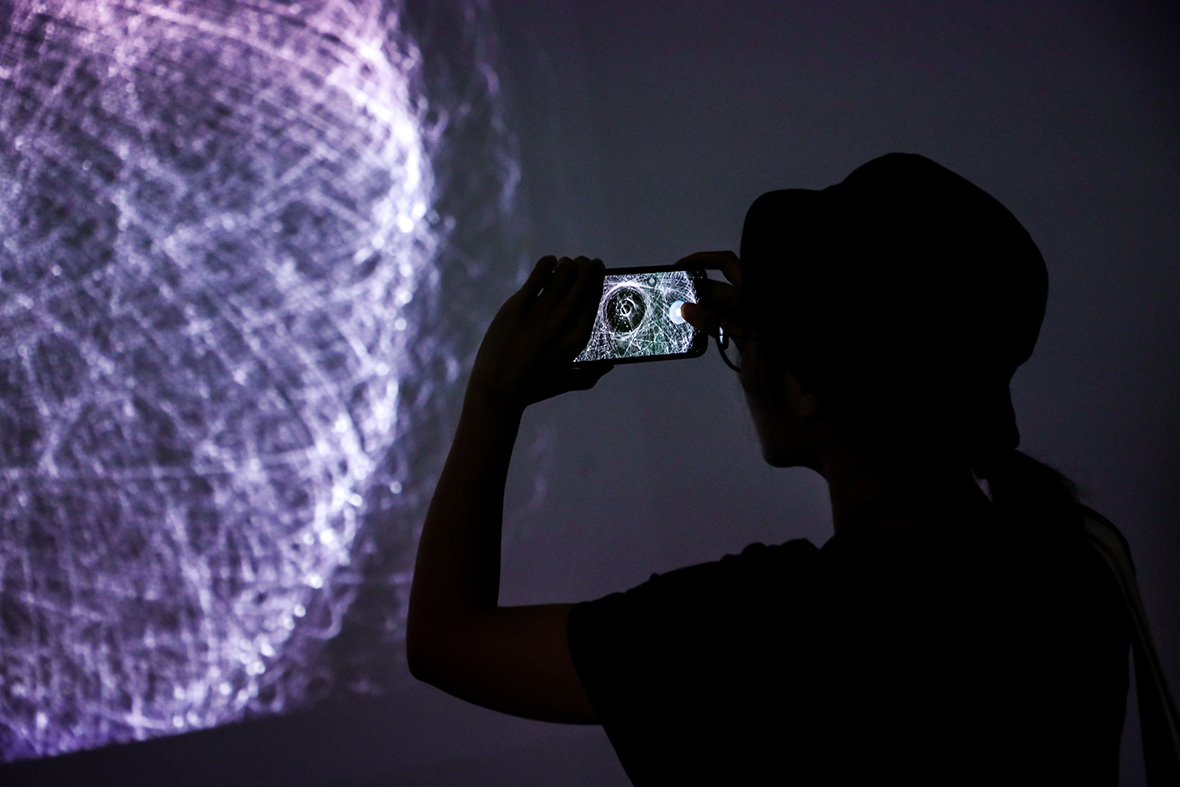
Like our stories? Follow us on Facebook and Instagram.
Website: www.designsociety.cn
Contributor: Chen Yuan
Images Courtesy of Design Society




